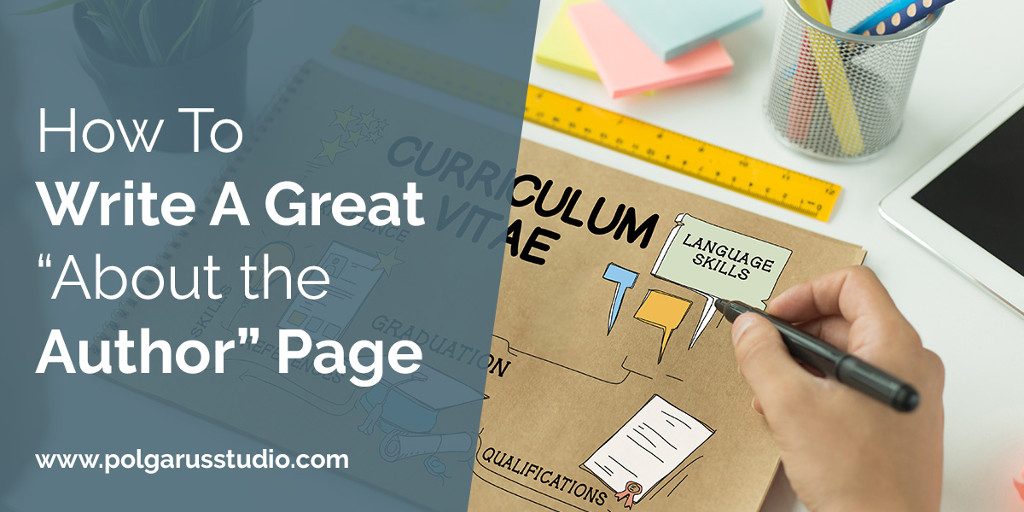After seeing several thousand books pass through our doors, if there’s one page in books often overlooked, it’s the “About the Author” page.
Sometimes the page is just very short – maybe a single sentence. But other times the page is left out entirely.
This is a mistake! Your author page is the best place you have in the book for connecting with the reader and making them realize that you’re a real person who (hopefully) they like enough to want to read your next book.
It’s also the perfect place to collect everything about you, and how to find you. And if you’re writing non-fiction, it’s essential for showing the reader that you can be trusted.
There are a lot of things you can include on your author page, and I’ll cover the important items below. Some of the items are more important than others. And sometimes it may make more sense to have a separate page with one of the items, rather than trying to put it all together on the one author page. Like everything in publishing, there is no right answer 🙂
Your bio – this is the most basic item you should include on the page. You want to include enough personal information that the reader feels you are a real person, but not so much that you bore them.
Don’t get carried away! Try to keep the bio part of your page to three or four sentences. You can include things like where you live, your job, family, interests (especially if they are related to your book), pets, etc., but don’t try to tell the reader everything there is to know about you. And remember that specifics may change, so don’t dwell too much on fine details.

Contact info – make it easy for your reader to find you! List all the links where your readers can follow you online – your website, blog, Facebook page, Twitter, Pinterest, Instagram, Google+, YouTube, Amazon author page, etc.
Maybe you’ve already listed them elsewhere in your book. Include them again 🙂 You can never make it too easy for a reader to find you!
Your newsletter – you should already have a separate note for your newsletter subscription at the end of your book (and possibly the start as well), but make sure to include a mention of it (with the link) on your author page again anyway.
An author picture – obviously some people hate to be photographed, and if you’re using a pen name, you may not want people to know what you look like, so it’s not compulsory to include a picture. But it does help make you seem “real”. Make sure the photo you use is well lit and in focus, and keep any background clutter to a minimum. And don’t just crop yourself out of a picture with others.
Book awards – if your books have won any awards, or you have been a finalist in a well-known competition, mention them here. And if any of your books have been a bestseller, definitely mention that!
Other books – you should already have a page where you list other books that you have written, so you don’t need to list all of them here (and if you have a lot of books, you definitely don’t want to list all of them! 🙂 ). But if there are any that are specifically related to the book (e.g., in the same series, use the same characters, are a prequel or sequel, etc.), then be sure to mention them.
Qualifications – Listing your qualifications doesn’t really matter in fiction books (although it may be interesting to a reader that the Regency romance novel they just read was by someone with a degree in English history), but if you are writing a non-fiction book, you should list all the qualifications you have that relate to the book.
While readers probably don’t care that you have veterinary qualifications if you have written a book about tax, they do want to know that you have worked as a tax accountant for the last ten years, and are accredited by three different accounting organizations.
One final note about your author page – write it in the third person. While it can be tempting to write in the first person (after all, you’re talking about yourself), it will seem strange to the reader.
Hopefully, these tips will help you write a fantastic author page. Remember, it’s all about connecting with the reader. Keep that in mind the whole time, and you can’t go wrong.
